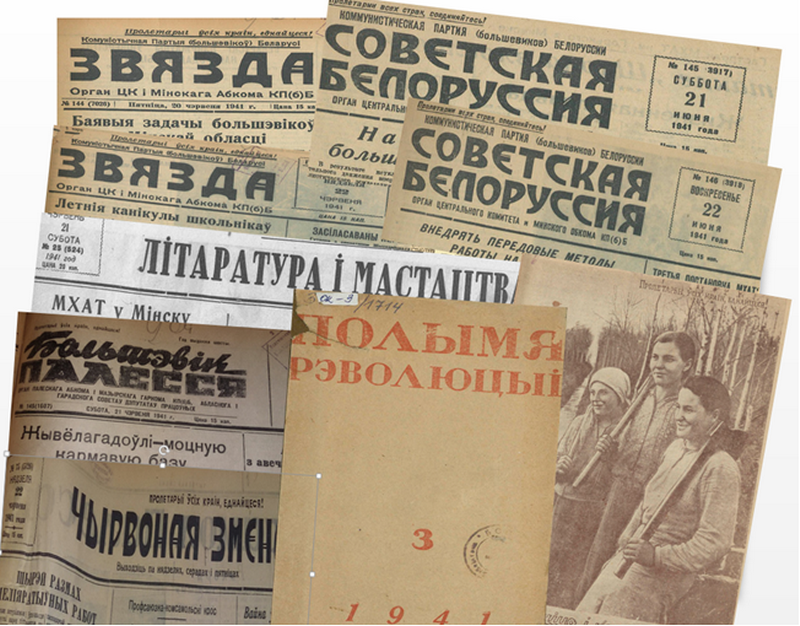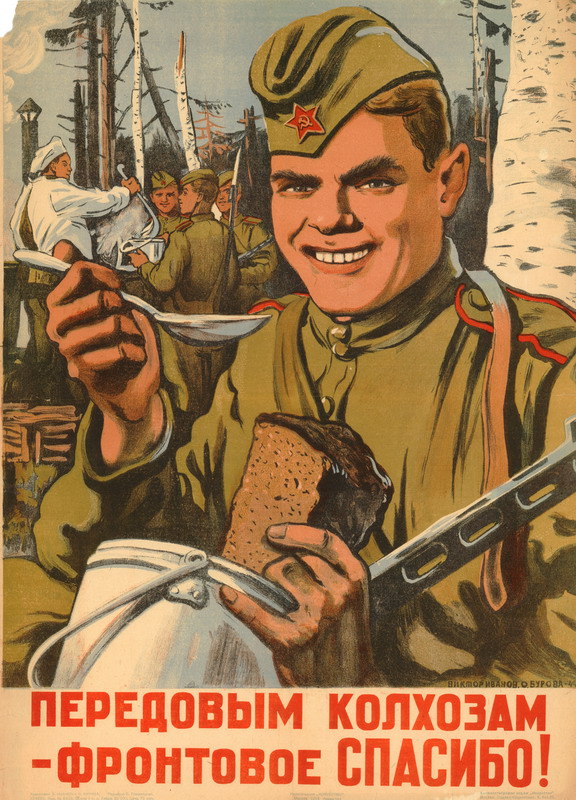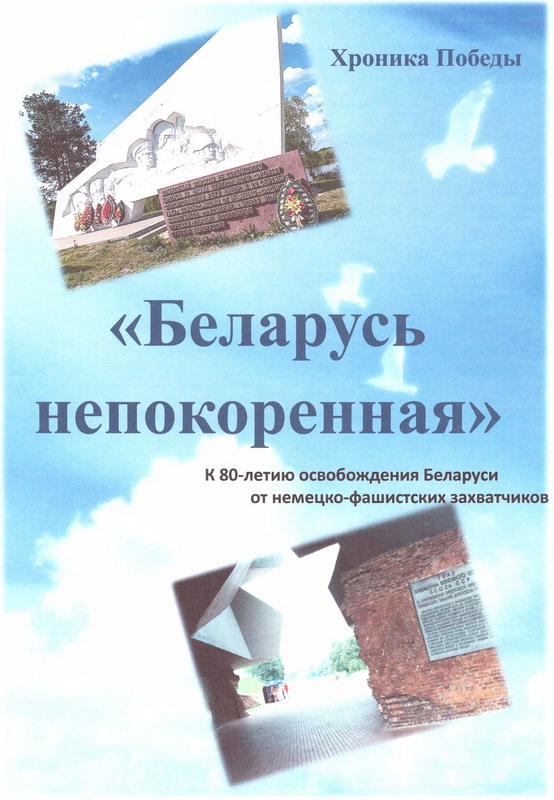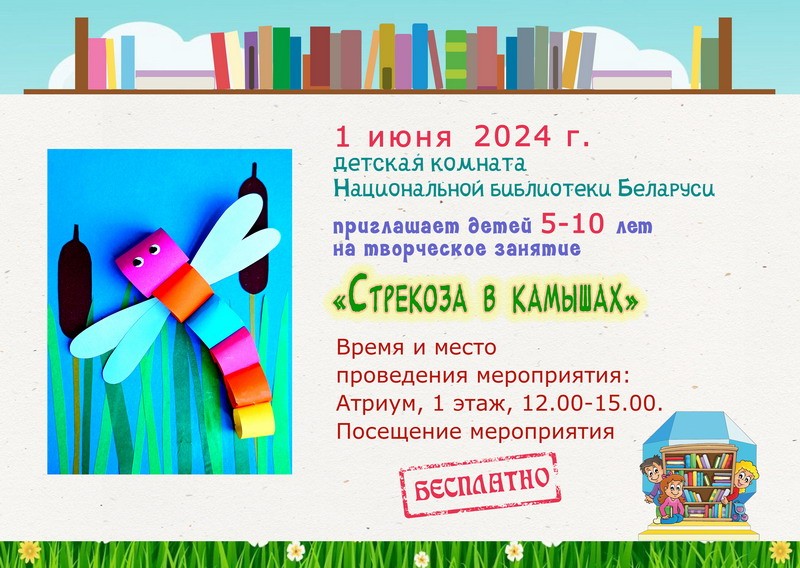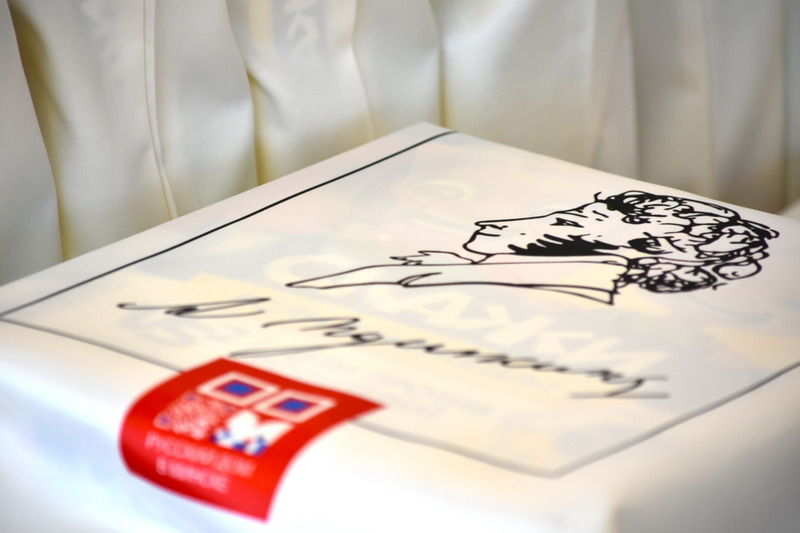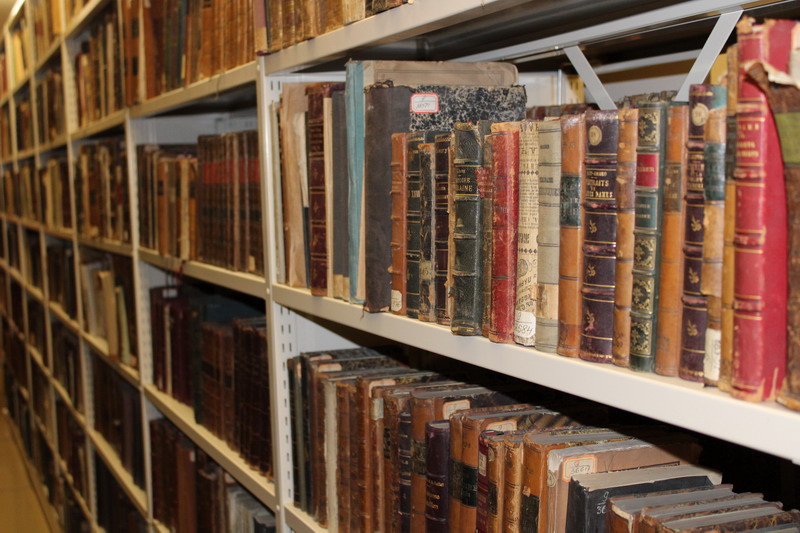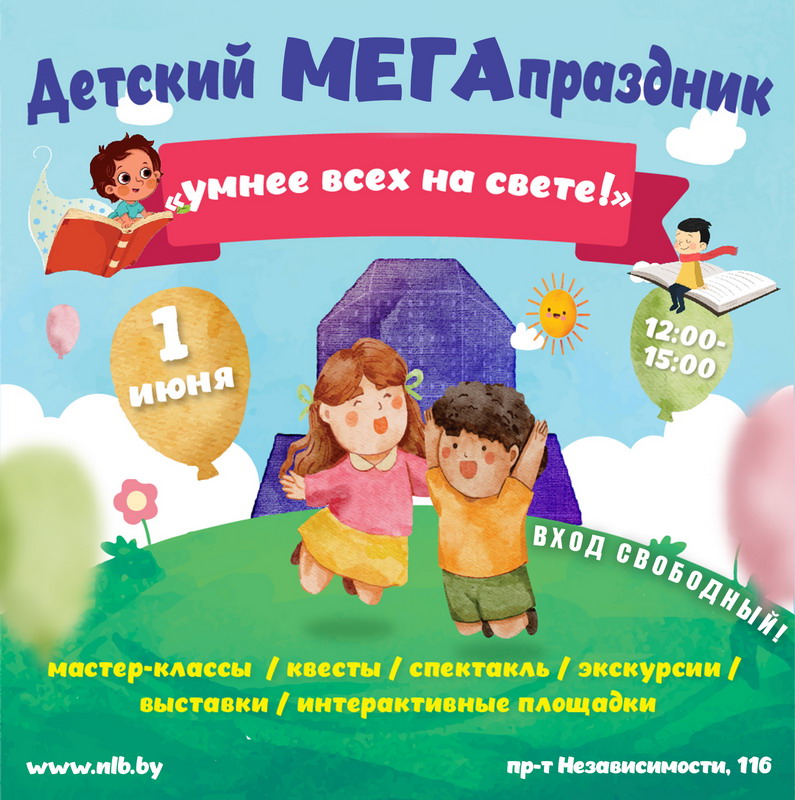June 21st, 1941 is the last peaceful day on the eve of one of the bloodiest and most brutal wars of the twentieth century: when the first bombs fell on our cities and villages, and millions of people's plans, dreams and hopes collapsed overnight.
The National Library of Belarus does not have many titles of periodicals from the pre-war period and, in particular, issues from the still peaceful June days. Among them are the central newspapers “Sovetskaya Belorussia”, "Zvyazda", "Litaratura i mastatstva", regional "Vitsebski rabochy", "Golas Palessya", "Balshavik Palessya", June issues of the magazines "Polymya ravalyutsii", "Rabotnitsa i kalgasnitsa Belarusi". We will look through them to find out how Belarus and its capital lived in the last peaceful days of 1941.
It follows from the materials of the periodicals that despite the threatening signs of the approaching war, the republic lived a peaceful and creative life: cities and villages were improved, industry and agriculture developed. June of the 41st was full of important events of various levels and scales: the entrance campaign for universities was starting; BSU was preparing to celebrate its 20th anniversary; the grand opening of the newly created Komsomol Lake in Minsk was planned; physical culture parades were held... The published ads and posters testified to the rich cultural life, especially in the capital.
We see calm, happy faces, peaceful life on the photos in the newspapers. And although every newspaper published reports on military operations on the Anglo-German front, in the North and East Africa, and Asia, it seems that nothing foretold that very soon war would break into the life of our country, mercilessly changing and breaking the fate of millions of people. Someone will die under the first bombs, someone will have time to evacuate, someone will go to the frontline, and someone will be under occupation for 3 years. Everybody lived with everyday problems, worked hard, went to theaters, concerts, watched movies, had a rest in nature, studied and fell in love...
By 1941, Minsk had a population of about 300,000 people, 142 state-owned industrial enterprises in the food, clothing, and leather industries, two of the largest machine-tool factories founded before the October Revolution, the capital of the republics, and – the Minsk radio plant, which was put into operation in 1940. In terms of capacity and technical equipment, it was planned to make the radio plant the second in the USSR and one of the largest in Europe. The plans of the city authorities for the next 5-10 years included increasing the territory of the capital by one and a half times, expanding and arranging the main streets and highways, opening 14 enterprises, including a watch factory, a thermal power plant, and an electrical appliance factory.
The largest scientific institution was the Academy of Sciences of the BSSR with 13 research institutes, as well as 4 research institutes of all-Union significance. In addition to the Belarusian State University, which was opened in 1921, there were 9 other universities, 17 technical schools, pedagogical, theater and music schools, a choreographic school, and 47 general education schools in Minsk. There were three museums: the Belarusian State Historical Museum, the State Art Gallery of the BSSR and the Museum of the Revolution of the BSSR were open to visitors from 10 a.m. to 22 p.m. Entrance was free.
For his creative achievements in literature and art, the national poet Yanka Kupala was awarded Stalin’s prizes of I and II degrees. The works of Kondrat Krapiva, a writer, Larisa Aleksandrovskaya, People's artist of the USSR, G.P. Glebov, People's artist of the BSSR and A.V. Bogatyrew, a composer, honored artist of the BSSR, were noted. The article about the laureates is published in the journal "Polymya Ravalyutsyi" (No. 3, pp. 10-16, last issue for 1941).
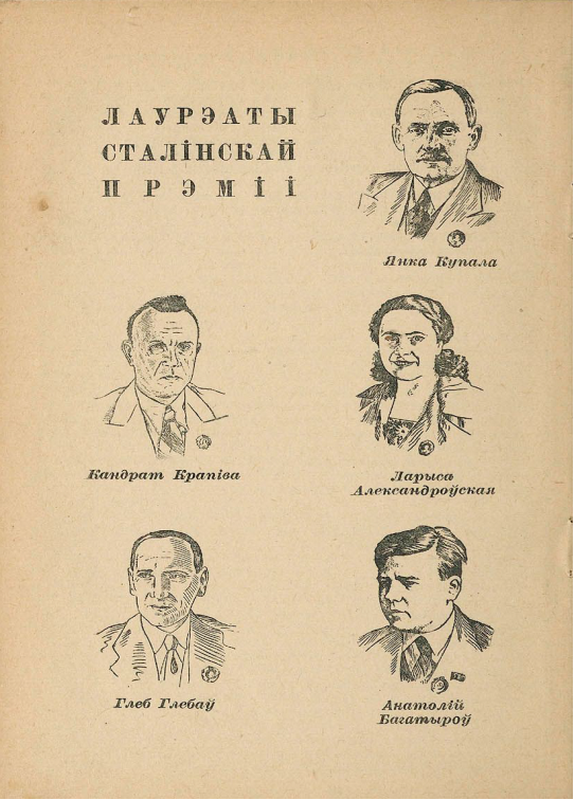
More than 3,000 people graduated from 20 higher educational institutions of the country: 211 mathematicians, physicists, historians, geographers and biologists graduated from BSU; 4 pedagogical and 6 teachers' institutes trained 1,400 teachers; two medical institutes – 560 doctors; more than 300 graduates of the Minsk Polytechnic Institute defended their diplomas; 300 specialists graduated from BSU. Belarusian Agricultural Institute in Gorki (By “Sovetskaya Belorussia”, June 22).
23 fifth-year students of the Belarusian State Conservatory were preparing to receive their diplomas June 22. It was planned to acquaint the capital's music fans with the graduation works of graduates of the composer's department during a specially organized concert. ("Sovetskaya Belorussia", June 21st).
It should be noted that among the graduates of this department was a talented young composer, future People's artist of Belarus, rector of the Belarusian State Conservatory c (1962-1982) Vladimir Olovnikov (1919-1996). After receiving his diploma, he volunteered for the front the next day and was on the front line until the last day. He worked his way up from an ordinary soldier to a captain, commander of an artillery division, and was awarded two Orders of the Patriotic War II degree. The composer's rich musical heritage includes symphonic works, music for films that bring the events of the Great Patriotic War to life, and wonderful lyrical and patriotic songs, including well-known ones "Lyasnaya Pesnya" based on the text by A. Rusak,"Radzima May Daragaya" based on the words by A. Bachilo and many others.
In the newspaper "Zvyazda" as of June 20th, a whole page under the heading "Where to Go to Study" was devoted to announcements of educational institutions of our country about the admission of students for the new 1941/42 academic year.
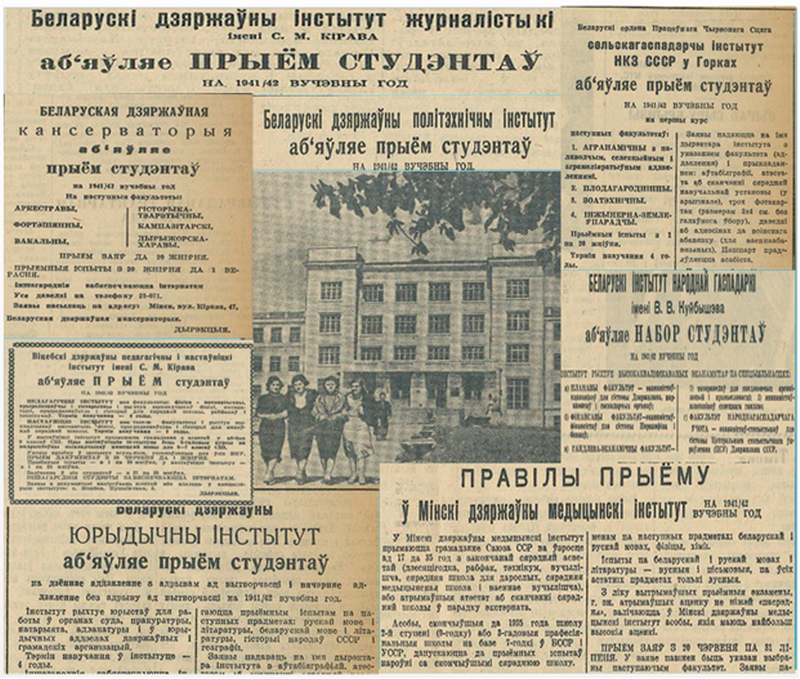
You can learn about the achievements, problems and plans of Belarusian composers in the field of symphonic music from B. Smolsky's article "Belarusian Folk Music" (“Litaratura i Mastatstva,” June 14, p. 3). The author noted, "N.Aladov, one of the oldest Belarusian composers, who in fact is the creator of Belarusian symphony music in its high professional significance, works most fruitfully in the field of symphony music."
“The search for something new, creative concern did not leave the State Opera and Ballet theater of the BSSR throughout the entire theatrical season,” noted M. Model, a theater critic, in his notes on the opera and ballet season (“Litaratura i Mastatstva”, June 14, p. 3). Classical operas "Cio-cio-san", "Traviata", "The Queen of Spades", "Hoffmann's Tales", ballets "Swan Lake", "Don Quixote" and an unexpected performance for the theater "Trilby" were staged. The most significant outcome of the season is the nomination of young vocalists and dancers for responsible roles and independent staging of interesting performances by young directors. Director Olga Borisevich ("Hoffmann's Tales", "Trilby") and choreographer Konstantin Muller ("Swan Lake", "Don Quixote", "The Vain Precaution") were particularly distinguished., Summing up the results of the theater season, the author expressed a wish to see new opera and ballet works by Belarusian composers on the stage of the Opera House next season at the end of the article.
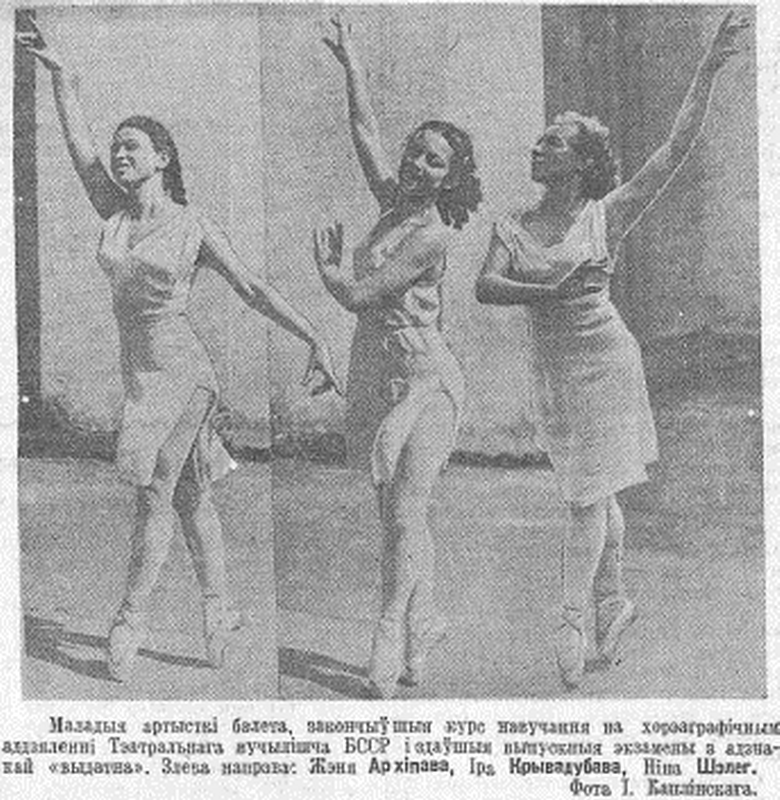
Honored artist of the BSSR A. Brazer finished a sculptural portrait of the composer A. Turenkov. In the picture published in the same issue of "Litaratura i Mastatstva", we see the sculptor and composer near the completed work.
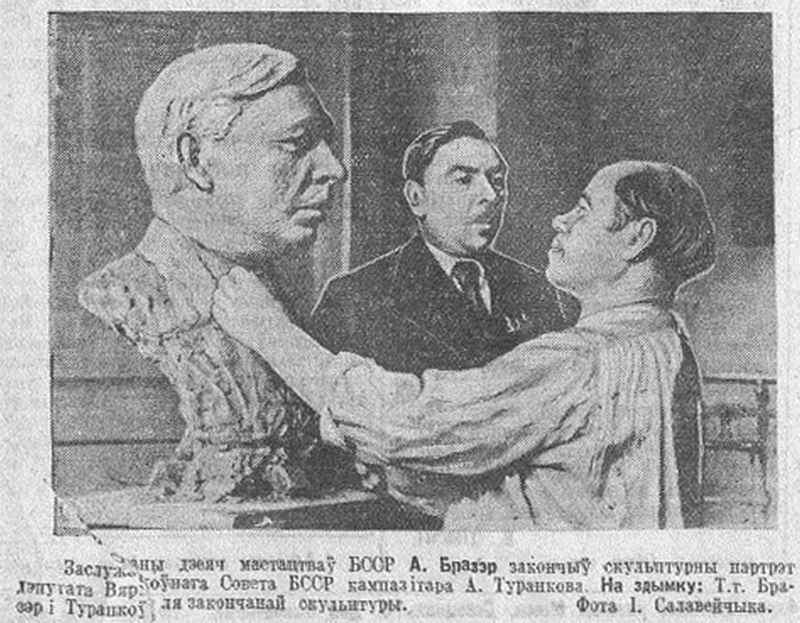
An interesting event in the country's artistic life was the joint exhibition of paintings and drawings by A. Brazier and L. Leitman, which was reported in the article "Two Maistras".
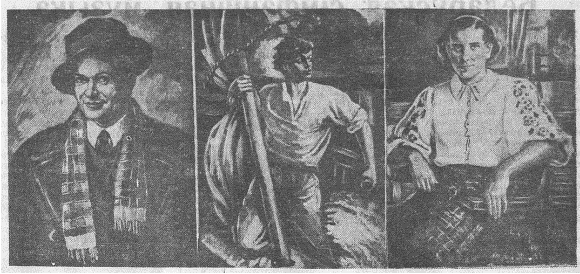
The photo shows the works of the artist P. Sergievich: "Self-portrait", "Struggle with the elements" and "Portrait of a Belarusian teacher".
And at the film studio "Savetskaya Belarus" started working on the short film "Courage", and also completed the translation into Belarusian of the movies "Bogdan Khmelnitsky", "Suvorov", "Chkalov".
Of course, a lot of attention was paid to the legendary Moscow Art Theater named after M. Gorky, which toured in the Belarusian capital, and its performances were extremely successful among Minsk residents. V.I. Nemirovich-Danchenko, the artistic director of the theater, People's artist of the USSR, could not come to Minsk with the theater for health reasons, which he informed the Belarusian public about through the newspaper “Sovetskaya Belarus” (as of June 19).
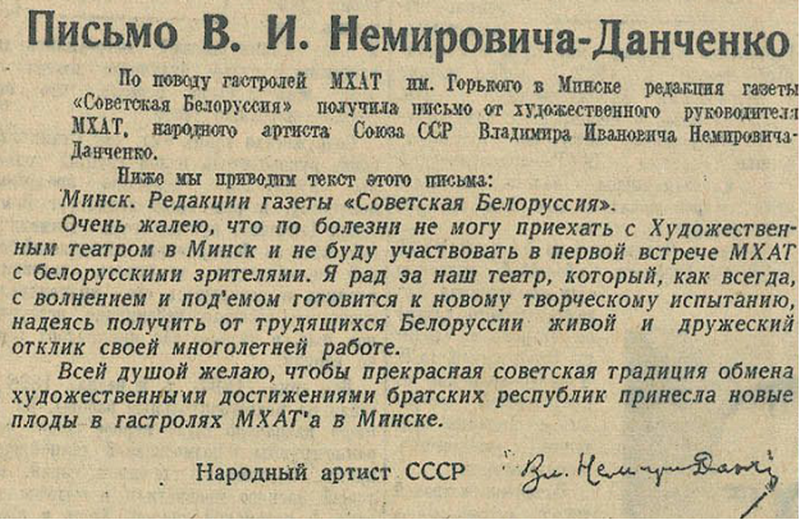
The tour troupe of 117 people, which included brilliant actors: V.I. Kachalov, People's artists of the USSR, I.M. Moskvin, M.M. Tarkhanov, N.P. Khmelev and many others, arrived in Minsk on the morning of June 16. The troupe was solemnly met at the railway station by officials, Belarusian art figures led by playwright K. Krapiva, and numerous military personnel.
By the way, M. M. Tarkhanov (real name Moskvin) since 1905 worked on the stage of the Minsk City Theater. In Soviet times, while already working at the Moscow Art Theater, he was also a professor at the A.V. Lunacharsky State Institute of Theater Arts, where in 1939 he headed a studio for training of Belarusian actors. The Brest Regional Drama Theater was founded in 1940 from the graduates of his course.
Until June 30th, 16 performances based on the plays "At the Bottom" by M. Gorky, "Days of the Turbins" by M. Bulgakov, "Tartuffe" by J.-B. Moliere, "School of Slander" by R. Sheridan and "Talents and Fans" by N. Ostrovsky were to take place. Concerts were also planned for military personnel of the Western Military Special District, since the Moscow Art Theater was considered the chief of the Red Army. Central Belarusian newspapers in connection with the tour of the famous theater published numerous greetings, including from Ya. Kupala, Ya. Kolas, K. Krapiva, M. Lynkov, admiring reviews and reviews of the performance and fans of the Moscow Art Theater.
At the same time, Belarusian theaters successfully toured in Odessa and Petrozavodsk ("Litaratura i mastatstva", June 14th).
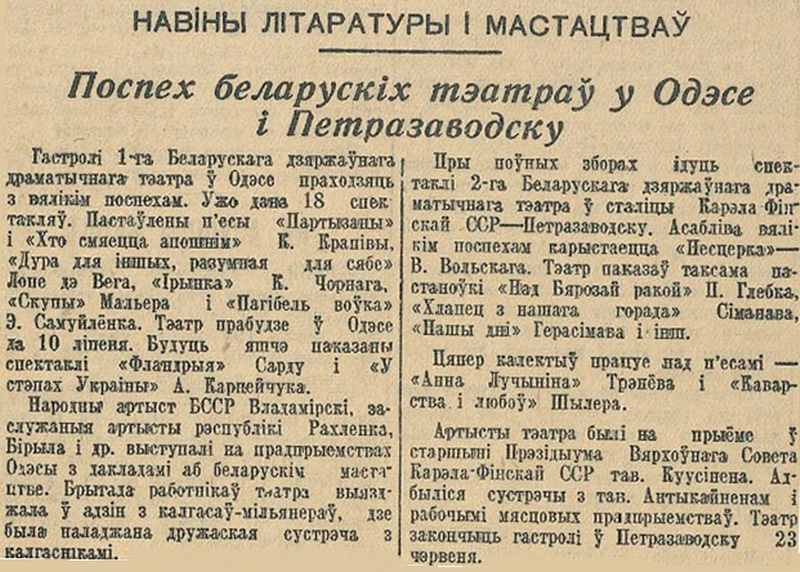
A number of publications were devoted to the country's sports life. The regions were actively preparing for the All-Belarus Physical Culture Parade. And students of the State Order of the Red Banner of Labor of the Institute of Physical Culture (pictured) were preparing for the All-Union Physical Culture Parade, the opening of which was scheduled for June 25th.
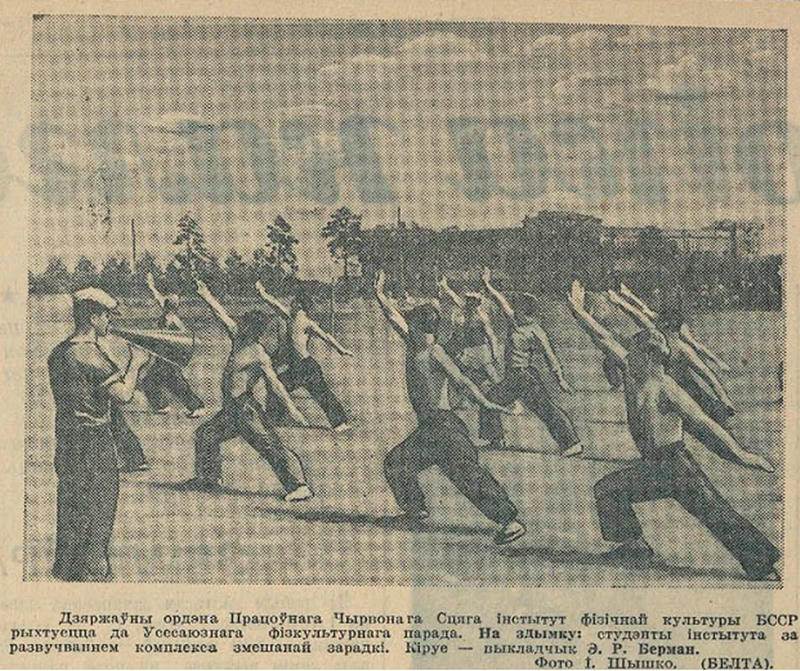
Competitions for the BSSR championship in sport and hunting shooting were held in a tense struggle. On June 21st, on the third day of the competition, the national champion in approach shooting was determined. He became the Master of Sports of the USSR Borisenko. According to preliminary data, the team championship was won by the team of Minsk, the second place was taken by the team of Vitebsk. The competition was supposed to end on June 22nd... (By "Sovietskaya Belarusiya", June 22nd).
On June 21st, a football match was held at the Dynamo stadium in Minsk, where the teams of Dynamo Minsk and the national team of Minsk met. To the great disappointment of the fans of the national team of the capital, the team of Dinamo Minsk won the match with a crushing score of 7:2 (By “Zvyazda”, June 22nd).
A lot of materials in the June issues of newspapers are devoted to the early implementation of semi-annual labor plans by Belarusian enterprises, collective farms, and other production collectives, the successful deployment of land reclamation works in a number of districts, summer agricultural work throughout the country, and the arrival of a number of new popular products of light industry in Belarus in the retail network.
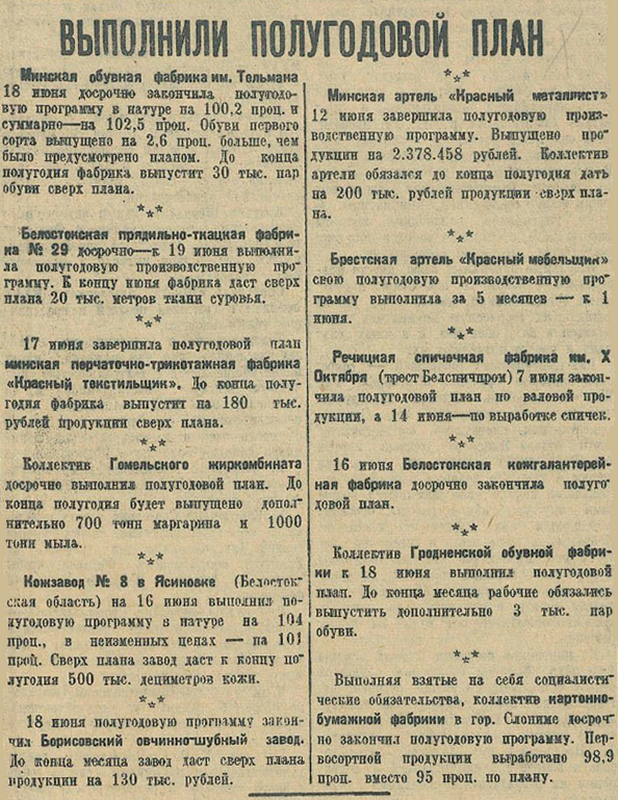
Collective and state farms have started harvesting early vegetables. A good harvest for the residents of the capital was grown in the collective farm "Svoboda" of the Minsk region.
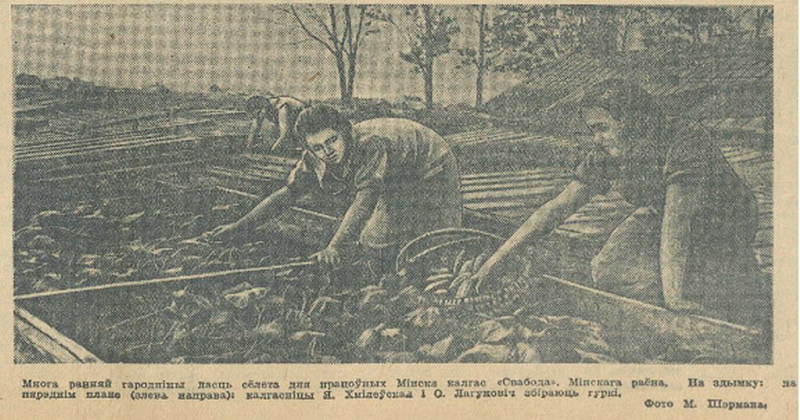
It was also reported about plans to start construction of a large improved greenhouse in Minsk – along the Borisovsky tract behind the Park of Culture and Recreation with an area of 1 thousand square meters. A special section in the future greenhouse was supposed to be set aside for tropical plants – palm trees, laurels, lemon and orange trees. It was planned to provide central heating and necessary lighting equipment.
A curious article (By “Sovetskaya Belorussia”, June 22nd) is devoted to the identification of losses at the Gomel confectionary factory “Spartak”. The inspection was carried out by a team of the Scientific Research Institute of the Food Industry of the BSSR.
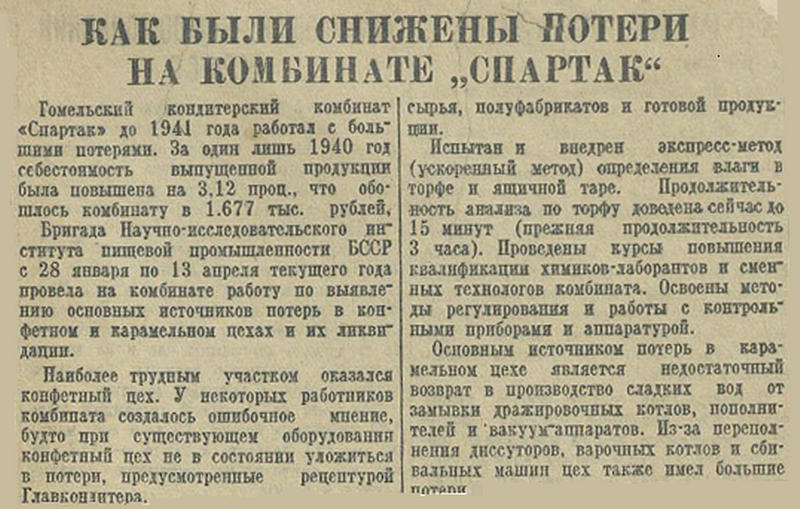
In the magazine An employee and a farm worker of Belarus contains an article about the participation of the BSSR in the All-Union Agricultural Exhibition of 1941 that opened in Moscow (the exhibition would close on July 1st).
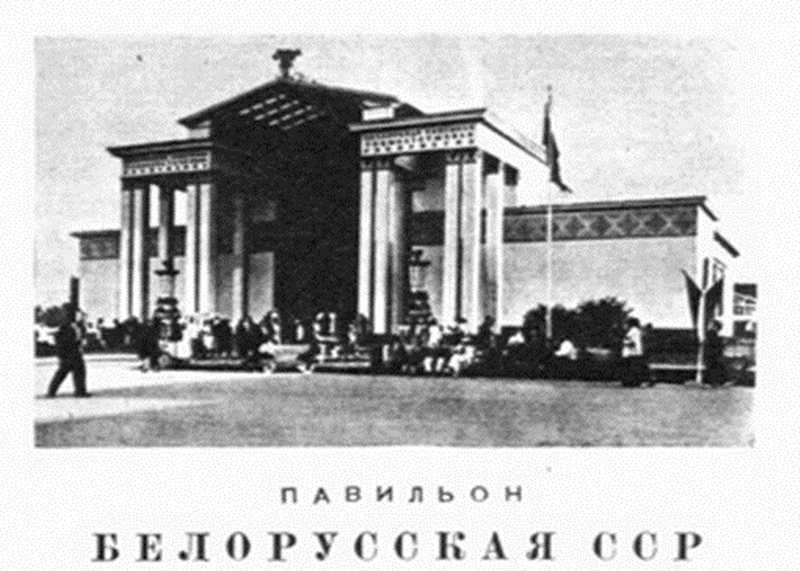
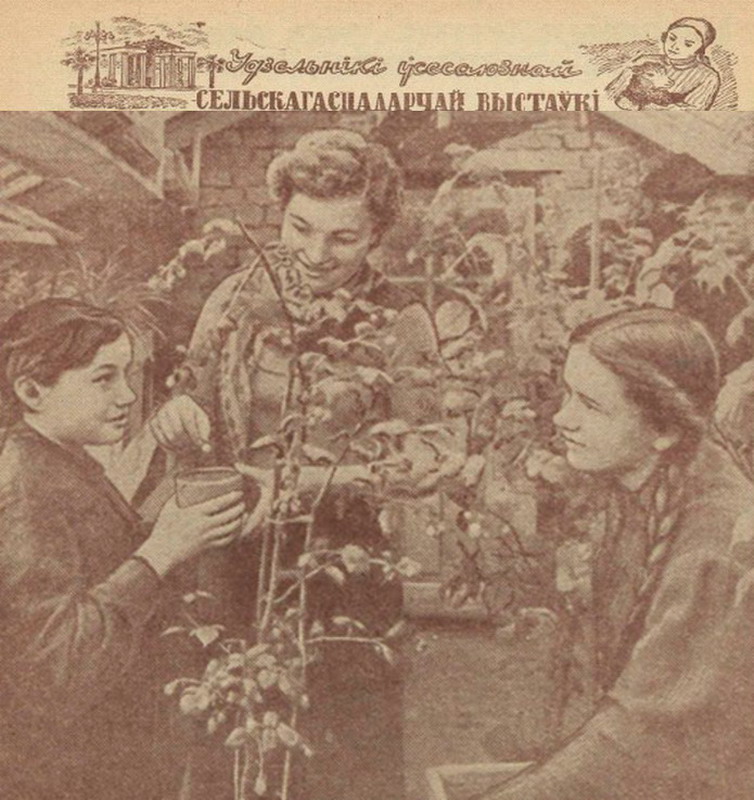
Participants of the All-Union Agricultural Exhibition of 1941: young naturalists of the Vitebsk Botanical Garden collect raspberries, which were grown in the greenhouse of the garden. Photo by BELTA.
In the same issue of the magazine in the article Reconstruction of the Belarus’ capital O.Batoev, an architect, and an engineer D.Eskevich tell about the general plan for the reconstruction of Minsk, designed for the next 10-15 years, the priority tasks of builders in 1941: completion of the construction of the Central Committee of the Party and the adjacent square, as well as 10 residential buildings with 100 apartments in each, carrying out the first stage of reconstruction of Sovetskaya Street. At the same time, the Station Square was reconstructed, which was decorated with original buildings on all sides, and a large reconstruction was also planned in the central part of the city (Engels, Lenin and Karl Marks Streets).
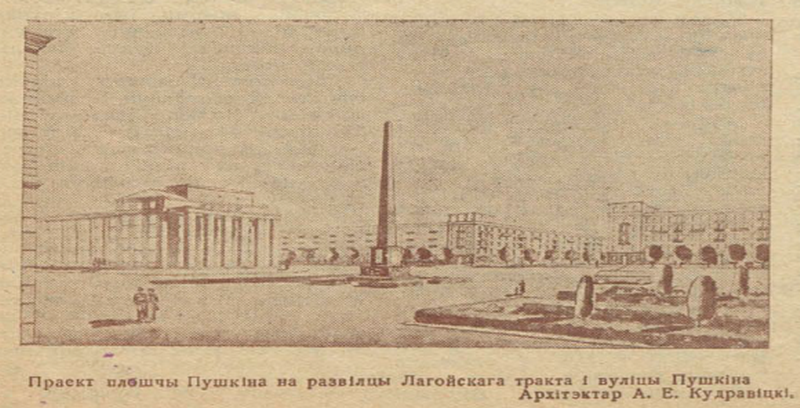
In a short article in the newspaper "Zvyazda" as of June 21st, it was reported that in five months of 1941, the Department of Library Collectors of the BSSR sent about a million books of various subjects in Belarusian, Russian, Jewish and Polish to mass and school libraries of the country. And in the photo from the newspaper "Chyrvonaya Zmena" as of June 20th, we see the famous Soviet children's writer Samuil Marshak surrounded by Minsk schoolchildren. The meeting took place on June 18 in the Moscow Palace of Pioneers.
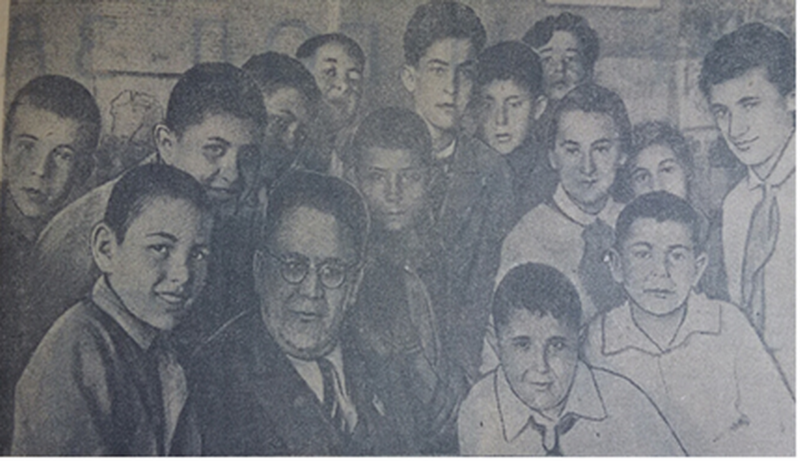
The summer season is in full swing. Newspaper “Sovetskaya Belorussia” reported on June 21st that 11 rest homes and two sanatoriums operate in Minsk, Gomel, Vitebsk, Mogiljov and other cities, where rest about 5,000 employees of various fields of activity. A group of Stakhanovites from Bialystok enterprises arrived in Zhdanovichi for a vacation. There is also an announcement about a meeting for parents to send their children to pioneer camps. Unfortunately, many children who were sent to pioneer camps were separated from their parents for a long time, some of them forever...
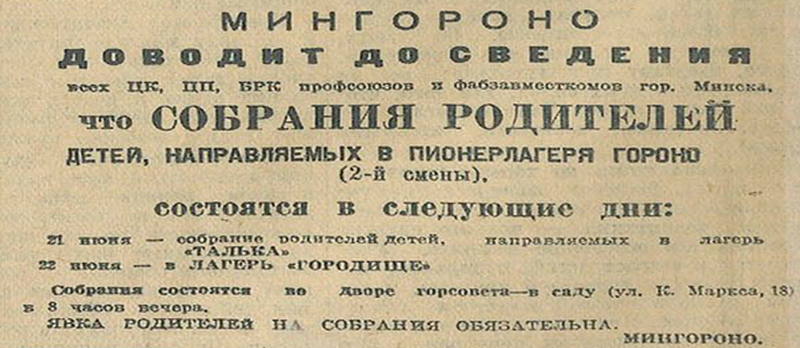
The same newspaper and the largest store in Minsk (GUM) unobtrusively invited to update the summer wardrobe, reporting on the sale of an expanded range of summer goods.
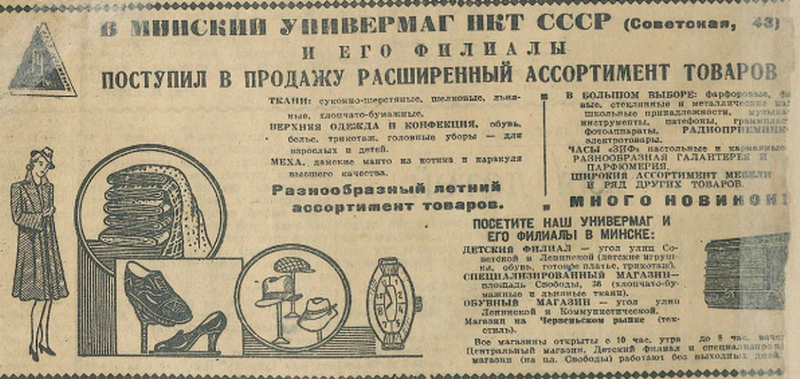
On Sunday, June 22nd, the opening of the swimming season on the Minsk lake was scheduled. Mass festivities, performances of amateur groups, and various sports competitions were planned along the shores of the lake. More than 40 boats were provided for tourists. 6 orchestras were invited to create a festive atmosphere. The newspapers also reported on the previous significant work on landscaping the lake territory: 3,500 trees, thousands of bushes were planted, lawns were laid out.
The central newspapers also pay enough attention to the life of the regions. From Mogiljov also reported on active preparations in cities and districts of the region for the Day of the Navy. In Khoiniki offers 20-day courses for winegrowers, which are attended by 17 gardeners from different regions of Polesie. In spring, 6,500 grape seedlings were planted in the collective farms of the Khoiniki district. Another 10,000 seedlings were ordered for autumn planting.
And this cute couple from Loev got into the photo of the correspondent's during a vacation on the Dnepr.
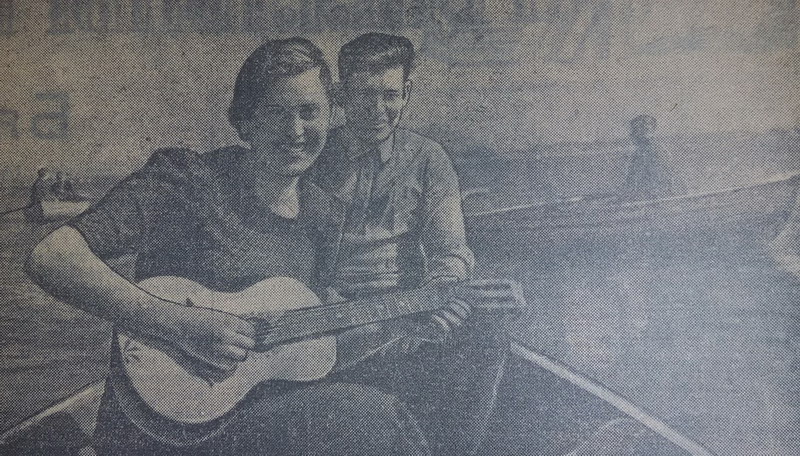
On June 20th, the Vitebsk Art School opened a report exhibition of students of the school, where over 200 works of painting, drawing, sculpture were presented. In the Vitebsk Regional Historical Museum, which was located in the building of the former town hall with a tower built in 1775, has collected many interesting and valuable exhibits – about 38,000 in total. Half of them are represented in the museum's exposition. The article reported that the museum's collections revealed 58 photographs of fortifications, ramparts (left after the War of 1812) on the territory of the Vitebsk region, Peter's house in Polotsk, etc., the book of privileges of the city of Vitebsk, autographs of Louis XV, Count Sheremetyevo and commander Rimsky-Korsakov, a belt from the Livonian War. There is an assumption that this belt belonged to the Polish King Stefan Batory (1576) (By "Sovietskaya Belarusiya", June 21st).
The time for active harvesting of medicinal herbs and other plant raw materials was beginning, and newspapers called on the country's population to actively participate in this.
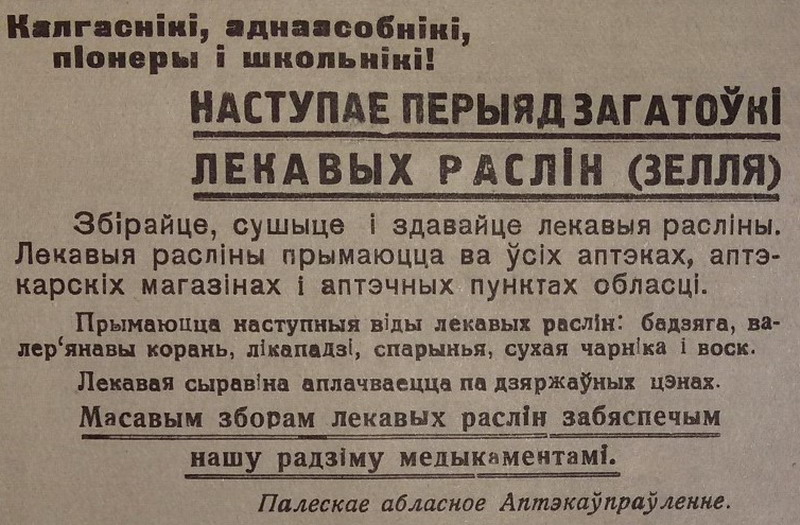
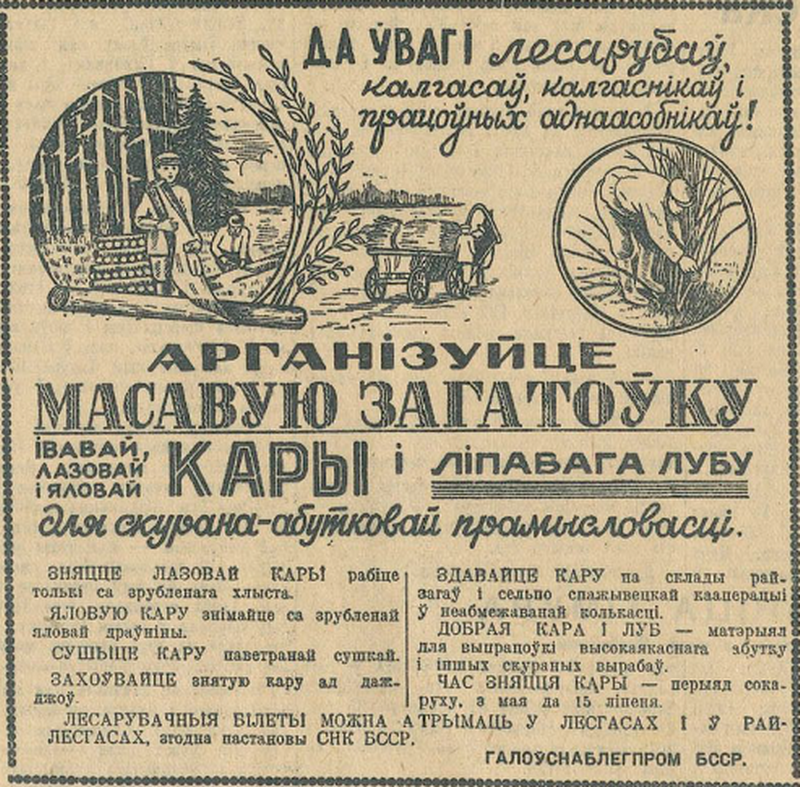
And in 1941, an advertisement with a call to keep money in a savings bank was relevant. And it looked, for example, like this.
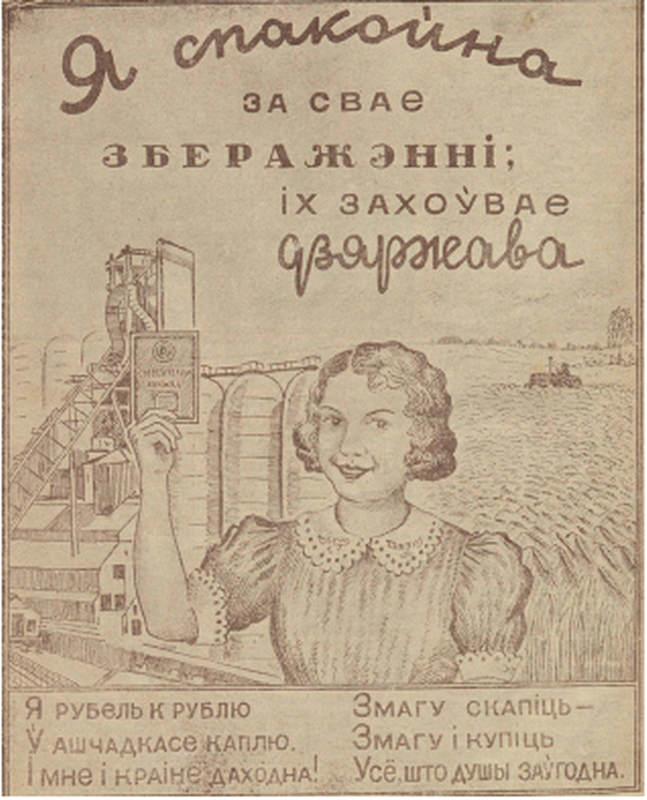
Advertising on the cover of the magazine "Rabotnitsa i Kalgasnitsa Belarusi» (№ 10, 1941).
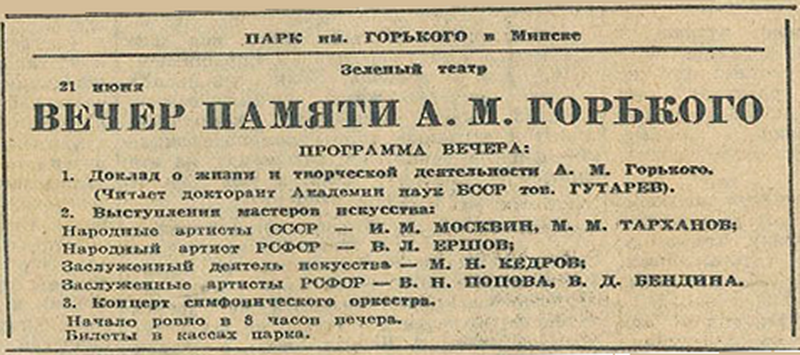
The State Polish Theater of the BSSR played "The Marriage of Figaro", the Ukrainian – "In the steppes of Ukraine", a big performance was held in the circus, in the club named after I.V. Stalin the performer of Jewish comic and everyday songs from Vilnius I. Kolodny performed. In the Krasnaya Zvezda cinema, the audience watched the feature film Tanker Derbent, and in the Rodina cinema, a concert performance of TEA JAZZ (theatrical jazz) was held and the film "Front-line Friends" about the participation of female vigilantes in the Soviet-Finnish war was shown. Premiere of the film based on the script by S. Mikhalkov and M. Rosenberg, directed by V. Eisymontom at the Lenfilm film studio, held in May 1941. In the main role – the famous Soviet actress Zoya Fedorova. On the eve of the weekend, even an additional night session was provided.
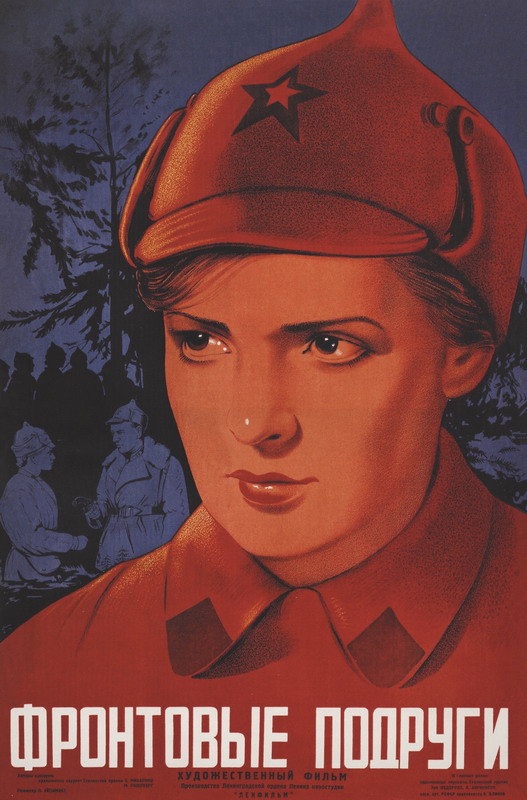
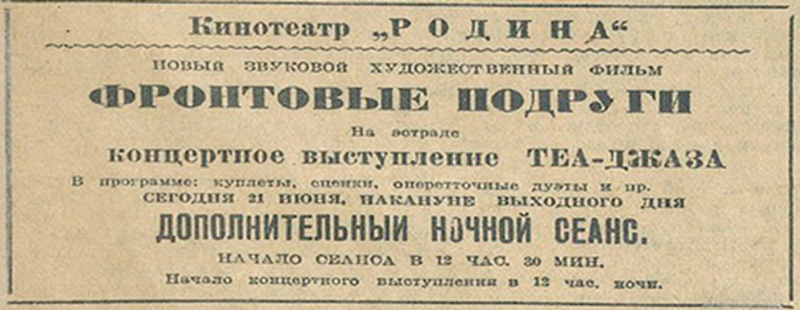
And in the House of the Red Academy of Fine Arts at 8:00 p.m., the play "Tartuffe" based on the play by J.B. Moliere began. In the hall were representatives of the BSSR leadership and the Western special military district command. At 10.00 p.m., after the performance ended, dinner was held, high-ranking military and civilians left the building in the first hour of the night, and the artists gathered in one of the hotel rooms to celebrate the success. During the conversations, time flew by unnoticed, they dispersed only at 4 o'clock in the morning, not suspecting that just in these predawn minutes on June 22nd, a new tragic countdown began in history (the Minsk epic. June 1941 / I. Voronkova / / Belorusskaya dumka. 2011. No. 6. pp. 12-20.)
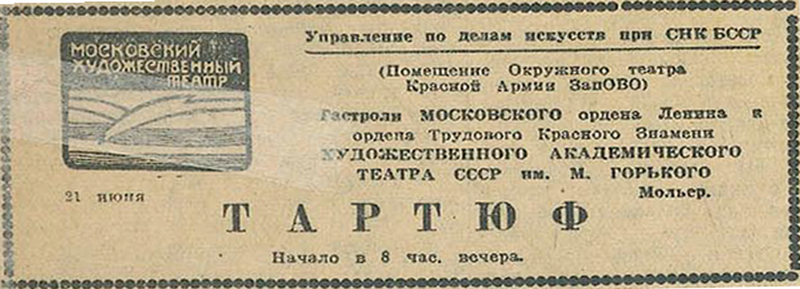
Newspapers and magazines came out with still peaceful information on June 22nd. Materials devoted to preparations for the celebration of the 20th anniversary of the Belarusian State University continued to be published. From an interview with the rector P.P. Savitsky, we learn that 6 researchers have completed their dissertations. Many researchers finish developing topics that are important for science. For the anniversary, except for the university-wide collection "20 years of BSU", each faculty will release its own collection of "Academic Notes". It was planned to organize exhibitions at the University, the Minsk House of Scientists, and the Lenin State Library of the BSSR. On June 23, guests were expected to arrive – more than 100 people from different republics and cities of the USSR. Celebrations dedicated to the anniversary were scheduled for June 24 with the opening of the BSU scientific session (By “Zvyazda”, June 20, 22, 1941).
Thus, only a few articles from several issues of newspapers and magazines, published on the eve of the war, allowed us to immerse ourselves in the atmosphere of the last peaceful days of our country in the now distant 41st. The event that changed the life of the country began treacherously.
Belarusians learned about the beginning of the war at noon on June 22nd from the speech of the People's Commissar for Foreign Affairs of the USSR V.M. Molotov on the radio...
***
[And outside the window, outside the window is the beauty of the new moon,
Weeping willows whisper with the Bug.
Year forty-one, early June.
Still alive, still alive,
Still alive, all, all, all.]
…
[Years have passed and again a quiet evening is outside the window.
Friends look from the portraits in silence.
In our memory today and forever
They're all alive, they're all alive,
They're all alive, all of them, all of them...]
From the song "Pre-war Waltz".
Words by F. Laube, music by P. Aedonitsky
By Ludmila Gorbacheva, Leading librarian of the Bibliography Research Department

